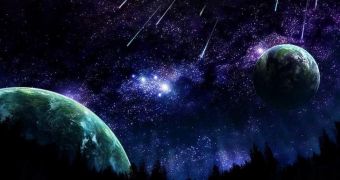Astronomers say that a meteor shower known to the scientific community as the Eta Aquarid is expected to reach its peak bright and early in the morning on Tuesday, May 6.
At that time, stargazers will be able to count about 60 meteors per hour, provided that the sky above the region from which they are observing the shower is dark and moonless.
The meteor shower will also be visible for several days before and after said date. However, specialists stress that, during this time frame, the shower will only appear at about one-quarter of its peak strength.
Space informs that, together with the Orionid meteor shower, which occurs in October, the Eta Aquarid meteor shower is caused by debris left behind by Halley's Comet, which is visible from Earth once every 75 to 76 years.
Thus, Halley's Comet last made an appearance in our inner Solar System back in 1986 and is expected to make a comeback sometime in the summer of 2061, astronomers explain.
Despite the fact that its visits are rather few and far in between, this comet has figured out a way to make sure that folks do not forget it all that easily and have something to remember it by.
Thus, Halley's Comet leaves behind a trail of so-called cosmic litter every time it travels around the Sun. According to specialists, the Eta Aquarid and the Orionid meteor shower occur when our planet journeys through dust left behind by the comet.
Specifically, the meteors folks will be able to observe this May and later this year, in October, are basically particles originating from Halley's Comet that enter our planet's atmosphere and that heat up and produce a streak of light as a result of friction.
As was the case with the solar eclipse that took place on April 29 and that penguins in the Antarctica alone got to observe in all its glory, not everybody will get front row seats to the Eta Aquarid meteor shower this month.
On the contrary, specialists say that, although people in the southern hemisphere might get to see 30 meteors per hour, those in the northern hemisphere will probably only get to see about 10 meteors within the same time frame, no matter how hard they strain their eyes.
Regardless, those who have their mind set on watching this year's Eta Aquarid meteor shower should do their best to find a place away from the city so as to make sure that urban lights do not interfere with the show.

 14 DAY TRIAL //
14 DAY TRIAL //